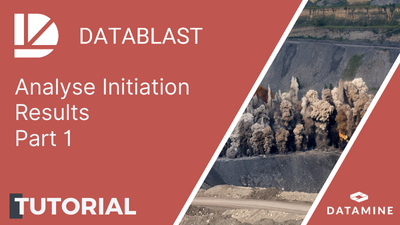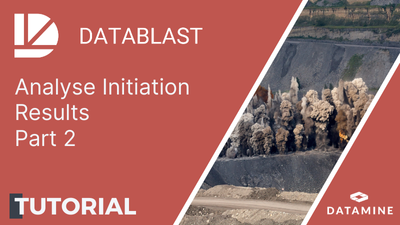Initiation Analysis
These videos, recorded using an earlier version of DataBlast Pro, provide examples of how to analyse initiation results.
Prerequisites for Analysis
For electronic systems, the initiation pattern must have timing assigned to every hole.
For non-electric systems, analysis of partial blasts is possible if Allow Calculation of Partial Blast is checked in Local Settings.
DataBlast Ignite calculates firing based on the hole toe position when hole tracks are displayed. If there are multiple hole angles in the blast, ensure that hole tracks display to give the correct firing simulations and timing contours.
Firing Simulation
The firing simulation shows the process of the blast over time. You can control the speed of the simulation and pause, rewind and fast-forward, as well as select from various display options.
For non-electric initiation, use the firing simulation to ensure that the burning front (of surface initiation) is well ahead of the downhole initiation.
Timing Contours
Contour lines join holes that have the same firing time across the blast. You can specify a contour interval for the analysis. The smaller the interval, the more contour lines display. For electronic timing, you can select for which timing object to display the contour lines.
During blasting, material typical moves in a perpendicular direction to the contour lines, towards the holes that are fired first.
Blast Relief Rates
Relief is the delay time (in milliseconds) per metre of apparent burden, triangulated between the holes in the initiation pattern.
Because the relief incorporates both hole spacing and timing, the display is useful for assessing potential blast performance. Aim to have constant relief across the blast, or consistent changes where additional or reduced relief is required; for example, adjacent to final walls.
Decks per Delay
Analyse which holes are firing within a configurable window of a selected delay time.
The number of decks per delay has an impact on the ground vibration generated by the blast. See Vibration Modelling.
Instantaneous Charge per Delay
Analyse the total charge of holes that are firing within a configurable window of a selected delay time.
Compare this charge per delay with the maximum instantaneous charge (MIC) applicable for your mine site and products. The MIC also impacts the ground vibration.



